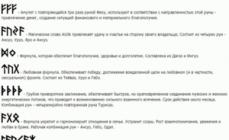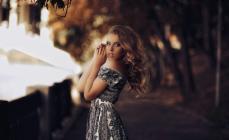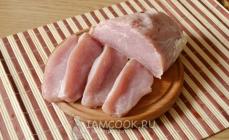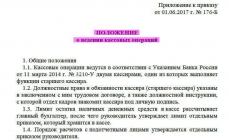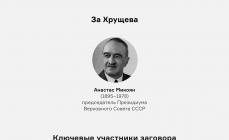Урок – заочная экскурсия
Тема: «Живопись. Третьяковская галерея»
«Painting. The State Tretyakov Gallery».
Цель урока: формировать умение высказываться на английском языке по заданной теме.
Задачи урока:
- Проверить уровень сформированности навыков в монологической и диалогической речи по изученной теме.
- Проверить уровень сформированности навыков и умений в чтении с извлечением необходимой информации.
- Расширить знания обучающихся по теме «Живопись».
Оборудование:
- Репродукции картин, телевизор, слайды.
- Портреты художников.
- Записи: «Осенняя песня» П.И. Чайковского, «Вокализ» С.В. Рахманинова.
Раздаточный материал: тексты для чтения, карточки – описания, карточки с ключевыми словами и словосочетаниями, задание на электронном носителе.
План урока
- Организационный момент
Диалог с дежурным
Сообщение цели и задач урока
- Фонетическая зарядка
Tommy Trot a man of law
Sold his bed and buy the straw,
Sold the straw and buy the grass
To buy his wife a looking-glass
В режиме: T – Gr, S1, S2, S3.
- Предложение ситуации и распределение ролей
Ситуация: группа английских студентов приглашена на заочную экскурсию в Третьяковскую галерею, которую проводят российские студенты.
Роли: гид, российские студенты, английские студенты.
- Вводное слово студента – гида о Третьяковской галерее:
Moscow is the largest cultural center of Russia. There are more than 80 museums in Moscow. The largest museums are the Pushkin Museum of Fine Arts and the State Tretyakov Gallery.
The state Tretyakov Gallery is a major research, artistic, cultural and educational center of Russia and a museum of Russian Art. Founded as a private collection in 1856 by the entrepreneur Pavel Tretyakov, a patron of the arts, it was donated to the city of Moscow in 1892.
The Gallery contains more than 55 thousand works today, including the rich collection of ancient Russian icons of the 12 th – 17 th centuries, painting and sculptures from the 18 th to 20 th centuries.
In 1994, the Tretyakov Gallery opened after 10 years of restoration.
(Рассказ сопровождается показом видов Третьяковской галереи, репродукциями картин).
- Учебный разговор в режиме G (Guide) – Ps (Pupils)
![]() P:
What social class was P. Tretyakov a member of?
P:
What social class was P. Tretyakov a member of?
G: He was a merchant.
P: What did he make his hobby?
G: He made a hobby of collecting pictures.
P: Why did he begin to collect Russian painting?
G: He wanted to help poor Russian painters, to support them and to bring art close to people.
P: As far as I know, Andrei Rublyov is the best known among the old Russian painters. Can we see his work in the Gallery?
G: Certainly. Rublyov’s “The Trinity” painted about 1427 is remarkable, humanistic and reflects the soul of the Russian people.
P: What were the first painting?
G: Tretyakov began his collection with the work of the “Peredvizhniki” (the artists who belonged to the Mobile Art Exhibition Association), so the gallery has an excellent collection of the best works by Shishkin, Surikov, Vasnetsov and Kramskoy.
P: Levitan’s landscapes are known all over the world. Do you admire his canvages?
“The Trinity” |
G: Sure. How colourful and Russian his landscapes are: “Golden Autumn”, “The Birch Copse”, “After the Rain”. How sad his “Vladimirka” is!
P: Are any of Repin’s works kept in the gallery?
G: Yes, of course. Repin is a great master whose canvases reflect the history of Russia and the life of its people. For example, everybody knows his picture “Ivan the Terrible and His Son Ivan”.
- Далее в беседу вступают студенты, исполняющие роль англичан.
Беседа о творчестве В. Сурикова
P: As for me, my favourite Russian painter is Surikov. He is one of the leading representatives of historical paintings. I have read many books about him and learned that he belongs to the historical trend and depicts historic events
G: Do you know anything about his life?
P: If I am not mistaken, he was born in Krasnoyarsk, in Siberia. He admired the works of Michelangelo and Titan. The subject of his own pictures was Russia’s past.
G: What pictures belong to his brush?
 P:
As far as I remember, they are “Boyarinya Morozova”, “Menshikov in Berezovka”, “The Morning of the Strelets Execution”.
P:
As far as I remember, they are “Boyarinya Morozova”, “Menshikov in Berezovka”, “The Morning of the Strelets Execution”.
G: Look at Surikov’s pictures. They are full of movement and very expensive. They are filled with the mood and tension of those items. The colours are bright and vivid.
“Menshikov in Berezovka” |
- Обучение диалогической речи. Обсуждение репродукции с картины В. Сурикова «Боярыня Морозова»
(Два студента имеют карточки с ключевыми словами и воспроизводят диалог, подготовленный как домашнее задание)
P 1 : I say, let’s talk about the picture “Boyarinya Morozova”.
P 2 : I am afraid I don’t remember what historic event the picture illustrates.
P 1 : Oh, don’t you? I can tell you. The subject of the painting is based on the conflict between the Dissenters and the official church. Morozova is a Dissenter. She has been arrested and is being taken to prison. Look at her face. It’s pale, but proud, isn’t it?
“Boyarinya Morozova” |
 P
2
:
It certainly is. Even fanatical, wouldn’t you say?
P
2
:
It certainly is. Even fanatical, wouldn’t you say?
P 1 : Exactly so. She is wonderful in her readiness to die for faith.
P 2 : What do you feel looking at the picture, I wonder?
P 1 : I feel sad, I feel sorry for her. And you?
P 2 : So do I. The picture impressed me greatly.
- Подготовка к монологическим высказываниям
- Гид обращает внимание студентов на репродукцию картин И. Левитана «Золотая осень», «Осенний дождь в Сокольниках», «После дождя», «Большая вода». Затем читает на русском языке отрывок из повести К.Г. Паустовского «Исаак Левитан». Звучит вокализ С.В. Рахманинова.
- Повторение ранее изученных слов и словосочетаний (выведено на экран):
 - the picture belongs to the brush of
- the picture belongs to the brush of
To be executed with great skill
One could feel the painter’s pallete
The picture conveys to me the idea of
“The Golden Autumn” |
It’s hard to take one’s eyes away from the picture
The landscape has caught my fancy
To give food for thought
To serve to create
Студенты по цепочке составляют предложения, описывающие репродукцию, после чего 1 – 2 студента дают связное описание (монологическое высказывание). Возможный вариант ответа может быть таким:

The picture belongs to the brush of Levitan. The artist depicted a wide alley on the autumn day in Sokolniki. It must be early October. We can see autumn maples. The air is damp. It is going to rain. In the foreground there is a woman in a black dress. Looking down, she is walking alone the alley. Her face is thoughtful and sad.
“The autumn day in Sokolniki” |
The landscape is executed with great skill. Looking at the picture we could feel Levitan’s pallete. It is difficult to take one’s eyes away from picture. It catches our imagination. The composition of the picture, its colours, the figure of the woman serve to create an impressive, sad but beautiful painting. Autumn is depicted as a sad season but the canvas conveys to us the idea off spring and rebirth. Being fond of Russian nature the master reproduced it in paintings known and dear to everybody.
Do you like the picture? Why?
Возможные варианты ответов:
- I am sure Levitan enjoys great popularity.
- I suppose his canvases are a great success.
- In my opinion people can stand for hours in front of his pictures and admire them.
- This autumn landscape is so colourful and expressive. It is difficult to tear oneself away from it.
- As for me I am greatly impressed and I am lucky to visit the gallery.
- Обучение чтению с извлечением основной информации

Возможные варианты ответов: Turner, Hogarth, Constable.
- Студентам предлагается для прочтения текст “John Constable”.
- G: Is there difference between Levitan’s and Constable’s paintings?
 What did you learn about John Constable?
What did you learn about John Constable?
- Завершение урока – заочной экскурсии.
Преподаватель:
- Explain the meaning of the proverb: “Life is short, art is long”.
- What is the role of art in our life?
To reflect life
To reflect people’s ideas and emotions
To ennoble one’s heart
To help to understand life better
To teach us to love our Motherland
To understand our past
To teach us to keep the environment clean
To evoke the feeling of joy, happiness, sadness, despair
To learn a lot by seeing the world through other people’s eyes
- Закрепление некоторых лексических единиц по теме «Живопись»
Разгадывание кроссворда
http://puzzlecup.com/crossword-ru/?guess=6EAC2B9086E94FAU
- Подведение итогов урока
Домашнее задание:
- Подготовить реферат об одном из художников
Moscow is replete with art galleries and museums. Yet there is one gallery that remains a symbol of Russian art. It is the world-famous Tretyakov Gallery.The founder of the gallery was the entrepreneur Pavel Tretyakov (1832-1898), who was from the merchant class. Beginning in 1856, Tretyakov had a hobby of collecting works by the Russian artists of his time. He was a famous patron of the arts who helped to support the "peredvizhniki" (a movement consisting of realistic painters in the second half of the 19th century). Toward this goal, he intended to purchase a collection from a St. Petersburg collector, Fyodor Pryanishnikov, and, having added his own collection, created a museum. The government bought Pryanishnikov"s gallery in 1867, but Tretyakov gradually acquired an excellent collection, exceeding all other collections in Russia in its volume and quality.
In 1892, Pavel Tretyakov donated his entire collection to Moscow. His brother Sergey Tretyakov (1834-1892) was also a collector, but only of Western European paintings.
The brothers" collections were at core of the Moscow Municipal Art Gallery, which opened on August 15, 1893. At first, it contained 1,287 paintings and 518 pieces of graphic art by Russian artists, as well as 75 paintings by Western European artists.
Later, the Western European paintings in the Tretyakov Gallery were transferred to the Hermitage and the A. S. Pushkin Museum of Fine Arts, and the Tretyakov Gallery began to specialize exclusively in Russian art.
After 1918, the Tretyakov collection grew many times with the inclusion of the collection of Ilya Ostroukhov (1858- 1929), an artist, paintings of the Russian school from the Moscow Rumyantsev Museum, and many private collections.
Presently, the gallery is being improved by carefully planned purchases. Already more than 55 thousand works are kept there. There is the rich collection of ancient Russian icon painting of the 12th-17th centuries including Andrei. Rublyov"s famous "Trinity", as well as significant works of painting and sculpture of the 18th - 19th centuries - paintings by Dmitriy Levitskiy, Fyodor Rokotov, Karl Bryullov,. Orest Kiprenskiy, Alexander Ivanov (including his well-known canvas "The Appearance of Christ Before the People"), Ivan Kramskoy, and sculptures by Fedot Shubin.
The gallery has an excellent selection of the best works by the "peredvizhniki": Ilya Repin (including "Ivan the Terrible and His Son Ivan"), Victor Vasnetsov, Ivan Shishkin, Vasiliy Surikov ("The Morning of the Strelets Execution"), Vasiliy Vereshchagin and others.
The blossoming of many areas of Russian art at the end of the 19th and the beginning of the 20th centuries is also well represented.
Suffice it to name such artists of the period as Mikhail Vrubel, I k Levitan, Nicholas Rerikh, Alexander Benua, Mikhail Nesterov, Konstantin Korovin, Mstislav Dobuzhinskiy, Konstantin Somov, Valentin Serov, Boris Kustodiev and Kuzma Petrov-Vodkin. After the relatively short period of the 1910"s-1920"s,new movements in art - futurism, cubism, etc. - were quickly developed.
Such an artistic movement as socialist realism also produced a number of talented and original artists. This trend is represented by works of Alexander Deineka, Arkadiy Plastov, Yuri Pimenov, Dmitriy Nalbandyan, and others.
The main building of the gallery includes the renovated Tretyakov home and several buildings that were attached to it at various times. The main facade of the building was erected in 1902 according to plans by the artist Victor Vasnetsov.
In 1994, the Tretyakov Gallery opened after 10 years of restoration. This was not just a facelift to the building; the interior and technical equipment were brought up to the highest standards of quality, which is as it should be, since it contains so many treasures of Russian art.
15 Сен
Тема по английскому языку: Третьяковская галерея
Топик по английскому языку: Третьяковская галерея (Tretyakov Gallery). Данный текст может быть использован в качестве презентации, проекта, рассказа, эссе, сочинения или сообщения на тему.
Сокровищница изобразительного искусства
Государственная Третьяковская галерея – национальная сокровищница русского изобразительного искусства и один из величайших музеев в мире. Он расположен в Замоскворечье, недалеко от Кремля. Фасад здания галереи был разработан художником Виктором Васнецовым в особом стиле русских сказок. История галереи началась в 1856, когда московский купец Павел Третьяков начал покупать работы русских художников. Он посетил все выставки и художественные студии и купил лучшие картины современных тогда художников. Мало-помалу Третьяков расширил сферу своих интересов и начал коллекционировать ранние русские произведения. В 1881 Павел Третьяков показал свою коллекцию обществу, а 11 лет спустя пожертвовал ее Москве.
Коллекция галереи
Коллекция галереи состоит полностью из русского искусства и художников, которые внесли вклад в историю русского искусства или были тесно с ней связаны. Коллекция содержит более 150 000 художественных произведений, скульптур и графики, созданных на протяжении веков поколениями русских художников. Галерея отражает историю русского искусства с 11 века до наших дней. Имеется также богатая коллекция русских икон. Самая известная из них – Троица, написанная в 15 веке Андреем Рублевым.
Мастера 18 века
В галерее есть залы, посвященные великолепным работам таких мастеров 18 века как Рокотов, Левицкий, Боровиковский и Щедрин.
Первая половина 19 века
Первая половина 19 века представлена изумительными работами Тропинина, Иванова, Венецианова. В галерее также помещена лучшая коллекция Передвижников, таких как Крамской, Перов, Мясоедов и другие. Можно также найти работы Серова, Врубеля, Кустодиева. Там есть исторические картины, портреты, пейзажи, морские пейзажи и т.д.
Заключение
Третьяковская галерея – это не только музей. Это также исследовательский, культурный и образовательный центр.
Скачать Топик по английскому языку: Третьяковская галерея
Tretyakov Gallery
National treasury of fine art
The State Tretyakov Gallery is the national treasury of Russian fine art and one of the greatest museums in the world. It is located in Zamoskvorechye, not far from the Kremlin. The façade of the gallery building was designed by the painter Victor Vasnetsov in a peculiar Russian fairy-tale style. The history of the gallery began in 1856, when the Moscow merchant Pavel Tretyakov started to buy works of Russian artists. He visited all the exhibitions and art studios and bought the best pictures of contemporary artists. Little by little Tretyakov extended his range of interest and began to collect earlier Russian paintings. In 1881 Pavel Tretyakov opened his collection to the public and 11 years later he donated it to the city of Moscow.
The Gallery’s collection
The Gallery’s collection consists entirely of Russian art and artists who have made а contribution to the history of Russian art or been closely connected with it. The collection contains more than 150 000 works of painting, sculpture and graphics, created throughout the centuries by successive generations of Russian artists. The Gallery reflects the whole history of Russian art, from the 11th century to the present day. There is a rich collection of old Russian icons. The most famous of them is the Trinity, painted in the 15th century by Andrei Rublev.
18th-century masters
The gallery includes halls devoted to the magnificent works of such 18th-century masters as Rokotov, Levitsky, Borovikovsky, Shchedrin.
The first half of the 19th century
The first half of the 19th century is represented by brilliant paintings of Tropinin, Ivanov, Venetsianov. The gallery has the best collection of the Peredvizhniki, such as Kramskoy, Perov, Myasoyedov, and others. We can also find works of Serov, Vrubel, Kustodiev. There are historical paintings, portraits, landscapes, seascapes, etc.
Conclusion
The Tretyakov Gallery is not only a museum. It’s also a research, cultural and educational centre.
Moscow is replete with art galleries and museums. Yet there is one gallery that remains a symbol of Russian art. It is the world-famous Tretyakov Gallery.
The founder of the gallery was the entrepreneur Pavel Tretyakov (1832—1898), who was from the merchant class. Beginning in 1856, Tretyakov had a hobby of collecting works by the Russian artists of his time.
He was a famous patron of the arts who helped to support the "peredvizhniki" (a movement consisting of realistic painters in the second half of the 19th century). Toward this goal, he intended to purchase a collection from a St. Petersburg collector, Fyodor Pryanishnikov, and, having added his own collection, created a museum.
The government bought Pryanishnikov"s gallery in 1867, but Tretyakov gradually acquired an excellent collection, exceeding all other collections in Russia in its volume and quality.
In 1892, Pavel Tretyakov donated his entire collection to Moscow. His brother Sergey Tretyakov (1834—1892) was also a collector, but only of Western European paintings.
The brothers" collections were at ,the core of the Moscow Municipal Art Gallery, which opened on August 15,1893. At first, it contained 1,287 paintings and 518 pieces of graphic art by Russian artists, as well as 75 paintings by Western European artists.
Later, the Western European paintings in the Tretyakov Gallery were transferred to the Hermitage and the A. S. Pushkin Museum of Fine Arts, and the Tretyakov Gallery began to specialize exclusively in Russian art.
After 1918, the Tretyakov collection grew many times with the inclusion of the collection of Ilya Ostroukhov (1858— 1929), an artist, paintings of the Russian school from the Moscow Rumyantsev Museum, and many private collections. Presently, the gallery is being improved by carefully planned purchases.
Already more than 55 thousand works are kept there. There is the rich collection of ancient Russian icon painting of the 12th—17th centuries including Andrei Rublyov"s famous "Trinity", as well as significant works of painting and sculpture of the 18th — 19th centuries — paintings by Dmitriy Levitskiy, Fyodor Rokotov, Karl Bryullov, Orest Kiprenskiy, Alexander Ivanov (including his wellknown canvas "The Appearance of Christ Before the People"), Ivan Kramskoy, and sculptures by Fedot Shubin.
The gallery has an excellent selection of the best works by the "peredvizhniki": Ilya Repin (including "Ivan the Terrible and His Son Ivan"), Victor Vasnetsov, Ivan Shishkin, Vasiliy Surikov ("The Morning of the Strelets Execution"), Vasiliy Vereshchagin and others.
The blossoming of many areas of Russian art at the end of the 19th and the beginning of the 20th centuries is also well represented.
Suffice it to name such artists of the period as Mikhail Vrubel, Isaak Levitan, Nicholas Rerikh, Alexander Benua, Mikhail Nesterov, Konstantin Korovin, Mstislav Dobuzhinskiy, Konstantin Somov, Valentin Serov, Boris Kustodiev and Kuzma Petrov-Vodkin.
After the relatively short period of the 1910"s— 1920"s, new movements in art — futurism, cubism, etc. — were quickly developed.
Such an artistic movement as socialist realism also produced a number of talented and original artists. This trend is represented by works of Alexander Deineka, Arkadiy Plastov, Yuri Pimenov, Dmitriy Nalbandyan, and others.
The main building of the gallery includes the renovated Tretyakov home and several buildings that were attached to it at various times. The main facade of the building was erected in 1902 according to plans by the artist Victor Vasnetsov.
In 1994, the Tretyakov Gallery opened after 10 years of restoration. This was not just a facelift to the building; the interior and technical equipment were brought up to the highest standards of quality, which is as it should be, since it contains so many treasures of Russian art.
Перевод топика: Третьяковская галерея
Перевод
:
В Москве много художественных галерей и музеев. И все же есть одна галерея, которая остается символом русского искусства. Это всемирно известная Третьяковская галерея.
Основателем галереи был предприниматель Павел Третьяков (1832—1898), который принадлежал к купеческому сословию. Начиная с 1856 г. у Третьякова появилось увлечение — коллекционирование произведений русских художников того времени. Он был известным покровителем искусств, поддерживал передвижников (объединение, в которое входили художники-реалисты второй половины XIX века). С этой же целью он намеревался купить коллекцию петербургского коллекционера Федора Прянишникова и вместе со своим собранием картин создать музей. Галерея Прянишникова в 1867 г. была куплена государством, но Третьяков постепенно приобрел отличную коллекцию, превосходящую по объему и ценности другие коллекции в России.
В 1892 г. Павел Третьяков передал в дар Москве всю свою коллекцию. Его брат Сергей Третьяков был также коллекционером, но только западноевропейской живописи.
Коллекции братьев были ядром Московской муниципальной художественной галереи, которая открылась 15 августа 1893 г. Вначале она содержала 1 287 картин и 518 произведений графического искусства русских художников, а также 75 картин западноевропейских художников.
Позже западноевропейские картины Третьяковской галереи были перевезены в Эрмитаж и Музей изобразительных искусств им. А. С. Пушкина. А Третьяковская галерея стала специализироваться исключительно на русском искусстве.
После 1918 г. коллекция Третьякова увеличилась во много раз, включив коллекцию художника Ильи Остроухова, картины художников русской школы из московского Румянцевского музея и многие частные коллекции. В настоящее время галерея пополняется приобретениями, покупка которых тщательно планируется, В ней хранится уже более 55 тысяч произведений. Здесь имеется богатая коллекция древнерусской иконописи XII—XVII вв., включая знаменитую "Троицу" Андрея Рублева, а также выдающиеся произведения искусства и скульптуры XVIII— XIX вв. — картины Дмитрия Левицкого, Федора Рокотова, Карла Брюллова, Ореста Кипренского, Александра Иванова (включая его известное полотно "Явление Христа народу"), Ивана Крамского и скульптуры Федота Шубина.
Галерея содержит прекрасную коллекцию лучших работ передвижников: Ильи Репина (включая картину "Иван Грозный и сын его Иван"), Виктора Васнецова, Ивана Шишкина, Василия Сурикова ("Утро стрелецкой казни"), Василия Верещагина и других.
Лучшие образцы различных видов русского искусства конца XIX — начала XX вв. также хорошо представлены.
Достаточно назвать имена таких художников как Михаил Врубель, Исаак Левитан, Николай Рерих, Александр Бенуа, Михаил Нестеров, Константин Коровин, Мстислав Добужинский, Константин Сомов, Валентин Серов, Борис Кустодиев и Кузьма Петров-Водкин. После сравнительно небольшого периода с 1910 по 1920 годы быстро развивались новые направления в искусстве — футуризм, кубизм и т. д.
Такое направление как социалистический реализм также породило много талантливых и оригинальных художников. Это течение представлено работами Александра Дейнеки, Аркадия Пластова, Юрия Пименова, Дмитрия Налбандяна и других.
Главное здание галереи включает обновленный дом Третьякова и несколько зданий, которые были пристроены к нему в разное время. Главный фасад здания был воздвигнут в 1902 г. согласно планам художника Виктора Васнецова. В 1994 г. Третьяковская галерея открылась после 10-летней реставрации. Это был не только косметический ремонт здания, качество интерьера и технического оборудования доведено до высочайшего уровня мировых стандартов, что само собой разумеется, т. к. в здании хранятся бесценные сокровища русского искусства.
Топик The Tretyakov Gallery
Moscow is replete with art galleries and museums. Yet there is one gallery that remains a symbol of Russian art. It is the world-famous Tretyakov Gallery.
The founder of the gallery was the entrepreneur Pavel Tretyakov (1832-1898), who was from the merchant class. Beginning in 1856, Tretyakov had a hobby of collecting works by the Russian artists of his time. He was a famous patron of the arts who helped to support the "peredvizhniki" (a movement consisting of realistic painters in the second half of the 19th century). Toward this goal, he intended to purchase a collection from a St. Petersburg collector, Fyodor Pryanishnikov, and, having added his own collection, created a museum. The government bought Pryanishnikov"s gallery in 1867, but Tretyakov gradually acquired an excellent collection, exceeding all other collections in Russia in its volume and quality.
In 1892, Pavel Tretyakov donated his entire collection to Moscow. His brother Sergey Tretyakov (1834-1892) was also a collector, but only of Western European paintings.
The brothers" collections were at ,the core of the Municipal Art Gallery, which opened on August 15,1893. At first, it contained 1,287 paintings and 518 pieces of graphic art by Russian artists, as well as 75 paintings by Western European artists.
Later, the Western European paintings in the Tretyakov Gallery were transferred to the Hermitage and the A. S. Pushkin Museum of Fine Arts, and the Tretyakov Gallery began to specialize exclusively in Russian art.
After 1918, the Tretyakov collection grew many times with the inclusion of the collection of Ilya Ostroukhov (1858- 1929), an artist, paintings of the Russian school from the Moscow Rumyantsev Museum, and many private collections. Presently, the gallery is being improved by carefully planned purchases. Already more than 55 thousand works are kept there. There is the rich collection of ancient Russian icon painting of the 12th-17th centuries including Andrei Rublyov"s famous "Trinity", as well as significant works of painting and sculpture of the 18th - 19th centuries - paintings by Dmitriy Levitskiy, Fyodor Rokotov, Karl Bryullov, Orest Kiprenskiy, Alexander Ivanov (including his wellknown canvas "The Appearance of Christ Before the People"), Ivan Kramskoy, and sculptures by Fedot Shubin.
The gallery has an excellent selection of the best works by the "peredvizhniki": Ilya Repin (including "Ivan the Terrible and His Son Ivan"), Victor Vasnetsov, Ivan Shishkin, Vasiliy Surikov ("The Morning of the Strelets Execution"), Vasiliy Vereshchagin and others.
The blossoming of many areas of Russian art at the end of the 19th and the beginning of the 20th centuries is also well represented.
Suffice it to name such artists of the period as Mikhail Vrubel, Isaak Levitan, Nicholas Rerikh, Alexander Benua, Mikhail Nesterov, Konstantin Korovin, Mstislav Dobuzhinskiy, Konstantin Somov, Valentin Serov, Boris Kustodiev and Kuzma Petrov-Vodkin. After the relatively short period of the 1910"s- 1920"s, new movements in art - futurism, cubism, etc. - were quickly developed.
Such an artistic movement as socialist realism also produced a number of talented and original artists. This trend is represented by works of Alexander Deineka, Arkadiy Plastov, Yuri Pimenov, Dmitriy Nalbandyan, and others.
The main building of the gallery includes the renovated Tretyakov home and several buildings that were attached to it at various times. The main facade of the building was erected in 1902 according to plans by the artist Victor Vasnetsov. In 1994, the Tretyakov Gallery opened after 10 years of restoration. This was not just a facelift to the building; the interior and technical equipment were brought up to the highest standards of quality, which is as it should be, since it contains so many treasures of Russian art.
Третьяковская галерея
В Москве много художественных галерей и музеев. И все же есть одна галерея, которая остается символом русского искусства. Это всемирно известная Третьяковская галерея.
Основателем галереи был предприниматель Павел Третьяков (1832-1898), который принадлежал к купеческому сословию. Начиная с 1856 г. у Третьякова появилось увлечение - коллекционирование произведений русских художников того времени. Он был известным покровителем искусств, поддерживал передвижников (объединение, в которое входили художники-реалисты второй половины XIX века). С этой же целью он намеревался купить коллекцию петербургского коллекционера Федора Прянишникова и вместе со своим собранием картин создать музей. Галерея Прянишникова в 1867 г. была куплена государством, но Третьяков постепенно приобрел отличную коллекцию, превосходящую по объему и ценности другие коллекции в России.
В 1892 г. Павел Третьяков передал в дар Москве всю свою коллекцию. Его брат Сергей Третьяков был также коллекционером, но только западноевропейской живописи.
Коллекции братьев были ядром Московской муниципальной художественной галереи, которая открылась 15 августа 1893 г. Вначале она содержала 1 287 картин и 518 произведений графического искусства русских художников, а также 75 картин западноевропейских художников.
Позже западноевропейские картины Третьяковской галереи были перевезены в Эрмитаж и Музей изобразительных искусств им. А. С. Пушкина. А Третьяковская галерея стала специализироваться исключительно на русском искусстве.
После 1918 г. коллекция Третьякова увеличилась во много раз, включив коллекцию художника Ильи Остроухова, картины художников русской школы из московского Румянцевского музея и многие частные коллекции. В настоящее время галерея пополняется приобретениями, покупка которых тщательно планируется, В ней хранится уже более 55 тысяч произведений. Здесь имеется богатая коллекция древнерусской иконописи XII-XVII вв., включая знаменитую "Троицу" Андрея Рублева, а также выдающиеся произведения искусства и скульптуры XVIII- XIX вв. - картины Дмитрия Левицкого, Федора Рокотова, Карла Брюллова, Ореста Кипренского, Александра Иванова (включая его известное полотно "Явление Христа народу"), Ивана Крамского и скульптуры Федота Шубина.
Галерея содержит прекрасную коллекцию лучших работ передвижников: Ильи Репина (включая картину "Иван Грозный и сын его Иван"), Виктора Васнецова, Ивана Шишкина, Василия Сурикова ("Утро стрелецкой казни"), Василия Верещагина и других.
Лучшие образцы различных видов русского искусства конца XIX - начала XX вв. также хорошо представлены.
Достаточно назвать имена таких художников как Михаил Врубель, Исаак Левитан, Николай Рерих, Александр Бенуа, Михаил Нестеров, Константин Коровин, Мстислав Добужинский, Константин Сомов, Валентин Серов, Борис Кустодиев и Кузьма Петров-Водкин. После сравнительно небольшого периода с 1910 по 1920 годы быстро развивались новые направления в искусстве - футуризм, кубизм и т. д.
Такое направление как социалистический реализм также породило много талантливых и оригинальных художников. Это течение представлено работами Александра Дейнеки, Аркадия Пластова, Юрия Пименова, Дмитрия Налбандяна и других.
Главное здание галереи включает обновленный дом Третьякова и несколько зданий, которые были пристроены к нему в разное время. Главный фасад здания был воздвигнут в 1902 г. согласно планам художника Виктора Васнецова. В 1994 г. Третьяковская галерея открылась после 10-летней реставрации. Это был не только косметический ремонт здания, качество интерьера и технического оборудования доведено до высочайшего уровня мировых стандартов, что само собой разумеется, т. к. в здании хранятся бесценные сокровища русского искусства.
Вопросы к материалу:
- What gallery in Moscow is a symbol of Russian art?
- What did P. Tretyakov intend to do?
- Who bought Pryanishnikov"s gallery in 1867?
- When was the Moscow Municipal Art Gallery opened?
- Who was the founder of the gallery?
- What did he make his hobby?
- Whom did he support?
- His brother Sergey Tretyakov was a collector of Western European paintings, wasn"t he?
- What did it contain at first?
- How many works are kept there now?
- What did P. Tretyakov do with his collection in 1892?
- Where were the Western European paintings transferred?
- What collections are extremely rich and beautiful in the gallery?
- Are new art movements of the 1910"s-1920"s represented in the gallery?
- The Tretyakov collection grew many times after 1918, didn"t it?
- How is the gallery being improved now?
- When was the main facade of the gallery erected? According to whose plans was it erected?
- When was the Tretyakov Gallery opened after 10 years of restoration? What does its interior look like after the restoration?


